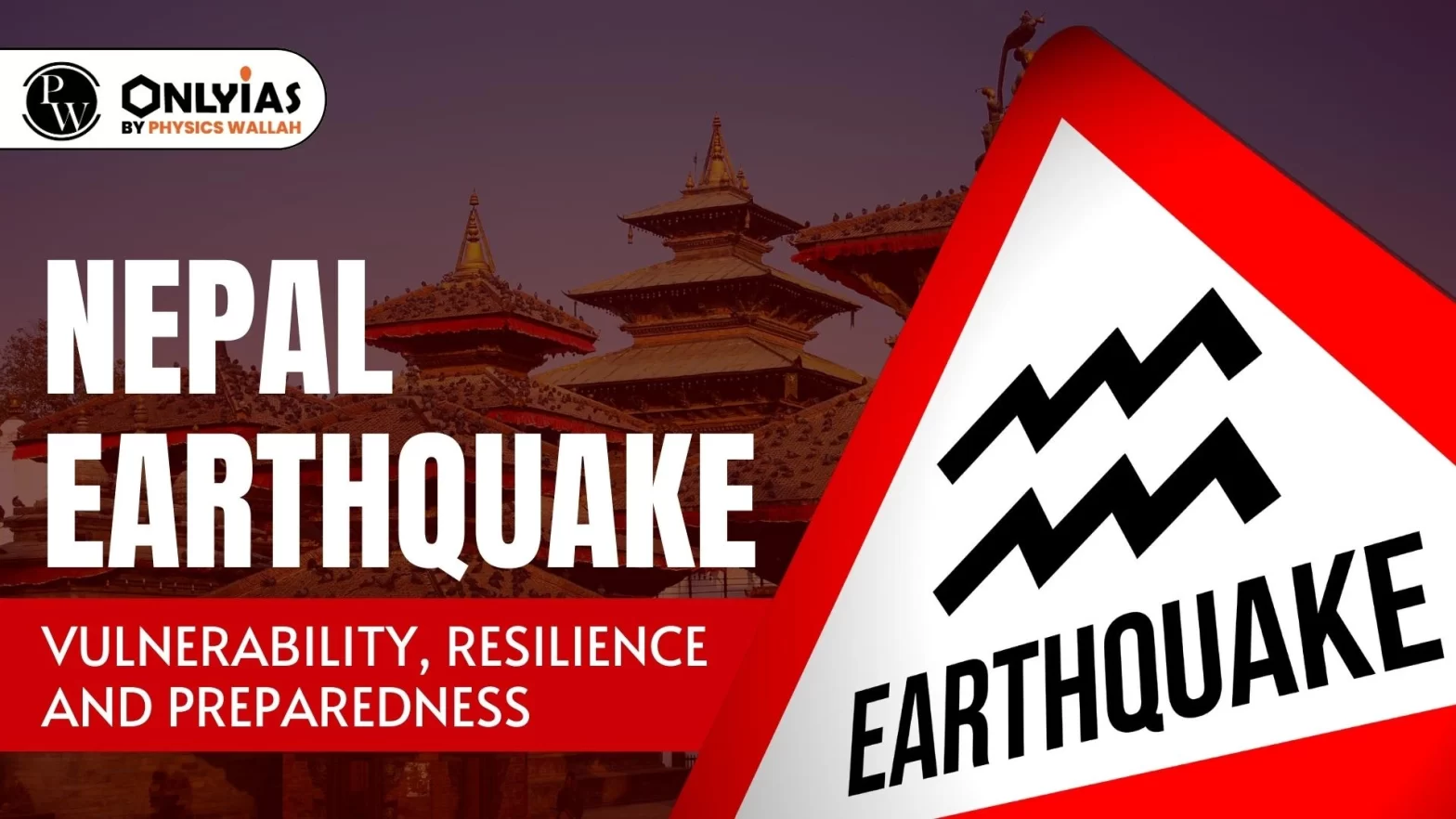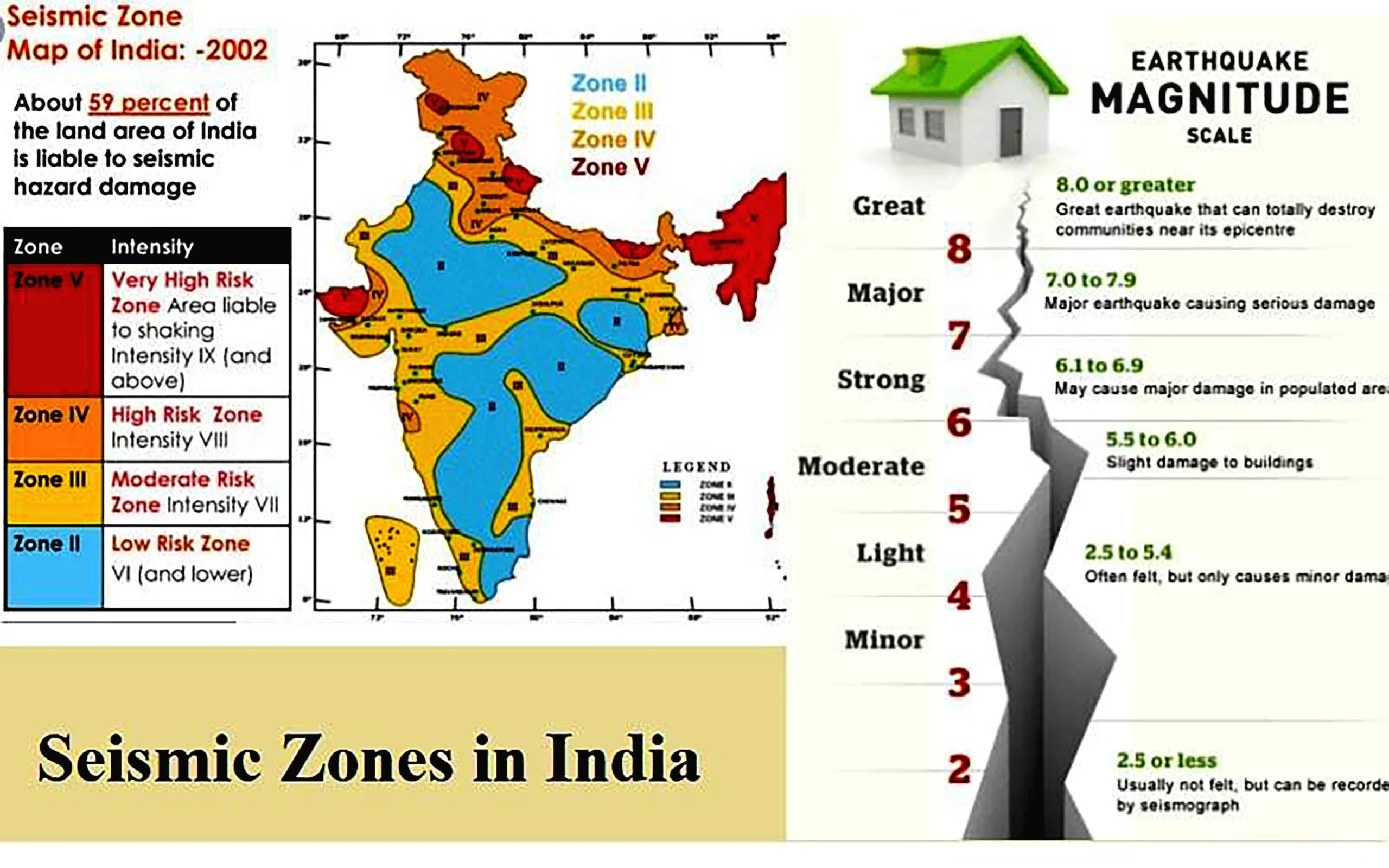Context: Recently, an earthquake of magnitude 6.4 struck western Nepal on 03 November night, resulting in the death of at least 132 deaths.

Context: Recently, an earthquake of magnitude 6.4 struck western Nepal on 03 November night, resulting in the death of at least 132 deaths.
| P waves (Primary Waves) | S waves (Secondary waves) | Surface Waves |
|---|---|---|
|
|
|
| Richter Scale |
|
|---|---|
| Moment Magnitude Scale |
|
| Modified Mercalli Intensity scale |
|
India’s large and increasing population coupled with unsustainable construction and planning that include multi-storeyed buildings and skyscrapers, keep India at high earthquake risk.
 Himalayan Belt: The entire Himalayan belt is considered prone to hazardous earthquakes of magnitude exceeding 8.0.
Himalayan Belt: The entire Himalayan belt is considered prone to hazardous earthquakes of magnitude exceeding 8.0.
India is divided into four earthquake zones (Zone II-Zone V).

| Must Read | |
| NCERT Notes For UPSC | UPSC Daily Current Affairs |
| UPSC Blogs | UPSC Daily Editorials |
| Daily Current Affairs Quiz | Daily Main Answer Writing |
| UPSC Mains Previous Year Papers | UPSC Test Series 2024 |
Nepal experiences earthquakes due to the collision of the Indian and Eurasian tectonic plates along its convergent boundary.
Nepal's vulnerability stems from its location on a convergent boundary, poor construction practices, and its position in a subduction zone, making it prone to seismic activity.
The focus is the point within the Earth where an earthquake originates, while the epicenter is the point on the Earth's surface directly above the focus.
Earthquakes are measured using magnitude scales like Richter and moment magnitude, and intensity scales like the Modified Mercalli Intensity (MMI) scale.
The Richter Scale measures earthquake magnitude on a logarithmic scale from 1 to 10, with each increase representing a tenfold energy release.
The National Building Code of India provides guidelines for regulating building construction activities and includes measures for natural calamities like earthquakes.
GIS technology helps map fault lines and identify high-risk areas prone to earthquakes, aiding in effective disaster preparedness and response planning.
TEWS at INCOIS detects earthquakes in the Indian Ocean, issuing timely bulletins to the Ministry of Home Affairs, enabling swift responses and effective disaster management.
Foreshocks are smaller earthquakes occurring before a main quake, whereas aftershocks are smaller tremors that follow a major earthquake.
Seismic waves generate ground shaking, damaging buildings and infrastructure, leading to potential collapses and other hazards.

<div class="new-fform">
</div>